Validation of an mHealth System for Monitoring Fundamental Physiological Parameters in the Clinical Setting
Abstract
:1. Introduction
2. Materials and Methods
2.1. Data Collection
2.2. Statistical Methodology
3. Results
3.1. Summary Statistics
3.2. Normality Tests
3.3. Systematic Errors and Power of Tests
3.4. Body Temperature Agreement Analysis
3.5. Heart Rate Agreement Analysis
3.6. Peripheral Oxygen Saturation Agreement Analysis
4. Discussion
Supplementary Materials
Author Contributions
Funding
Institutional Review Board Statement
Informed Consent Statement
Data Availability Statement
Conflicts of Interest
Appendix A
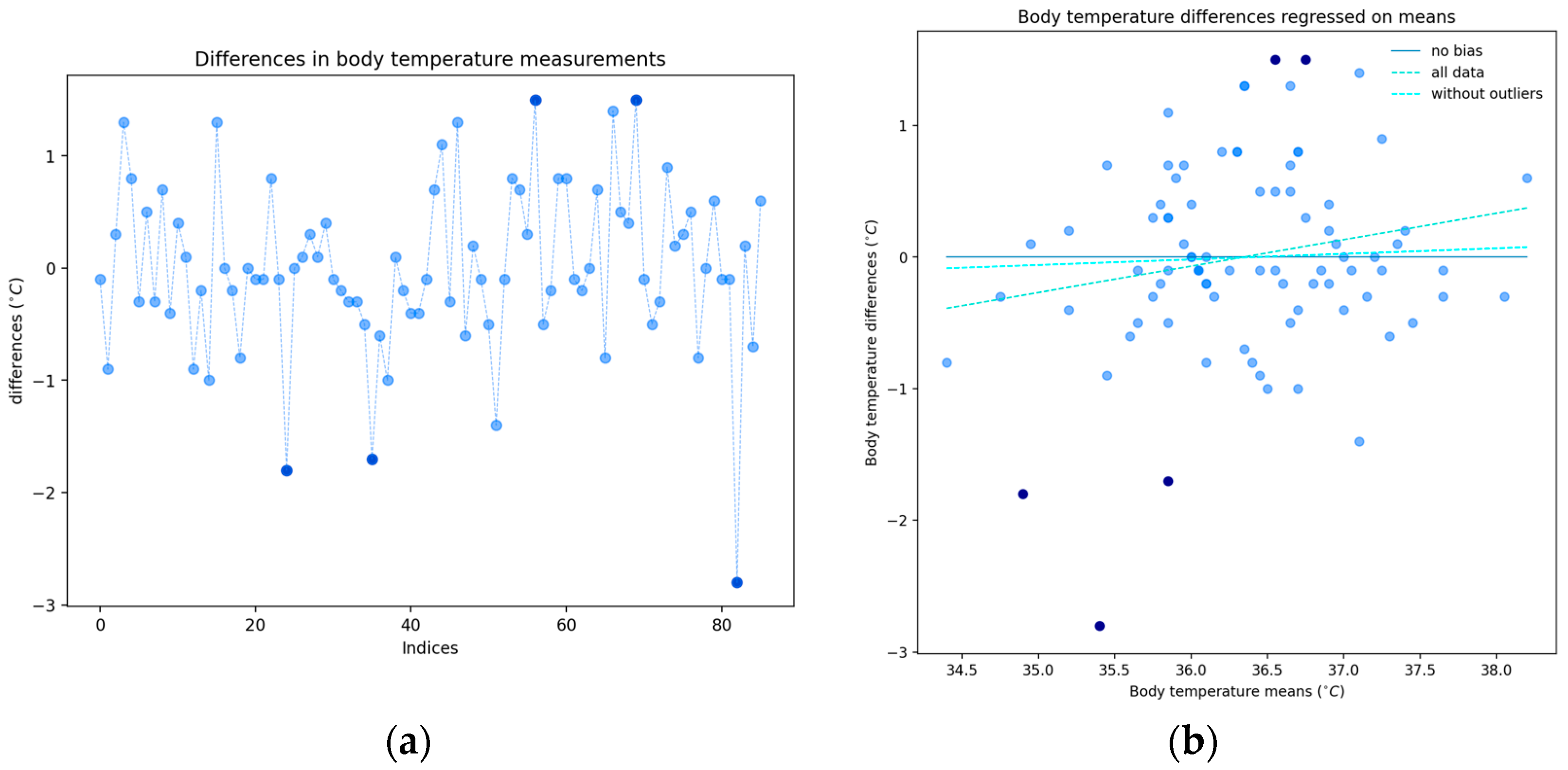

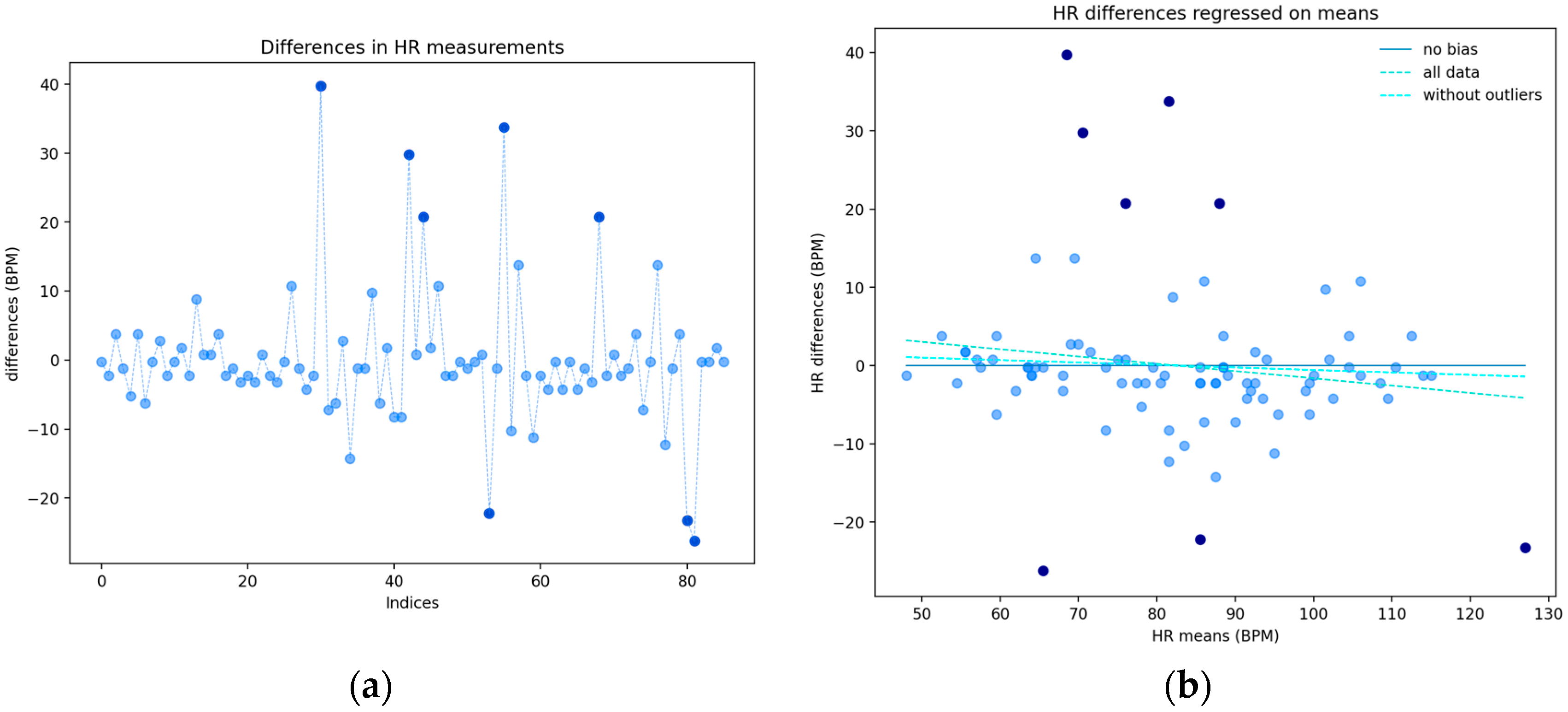

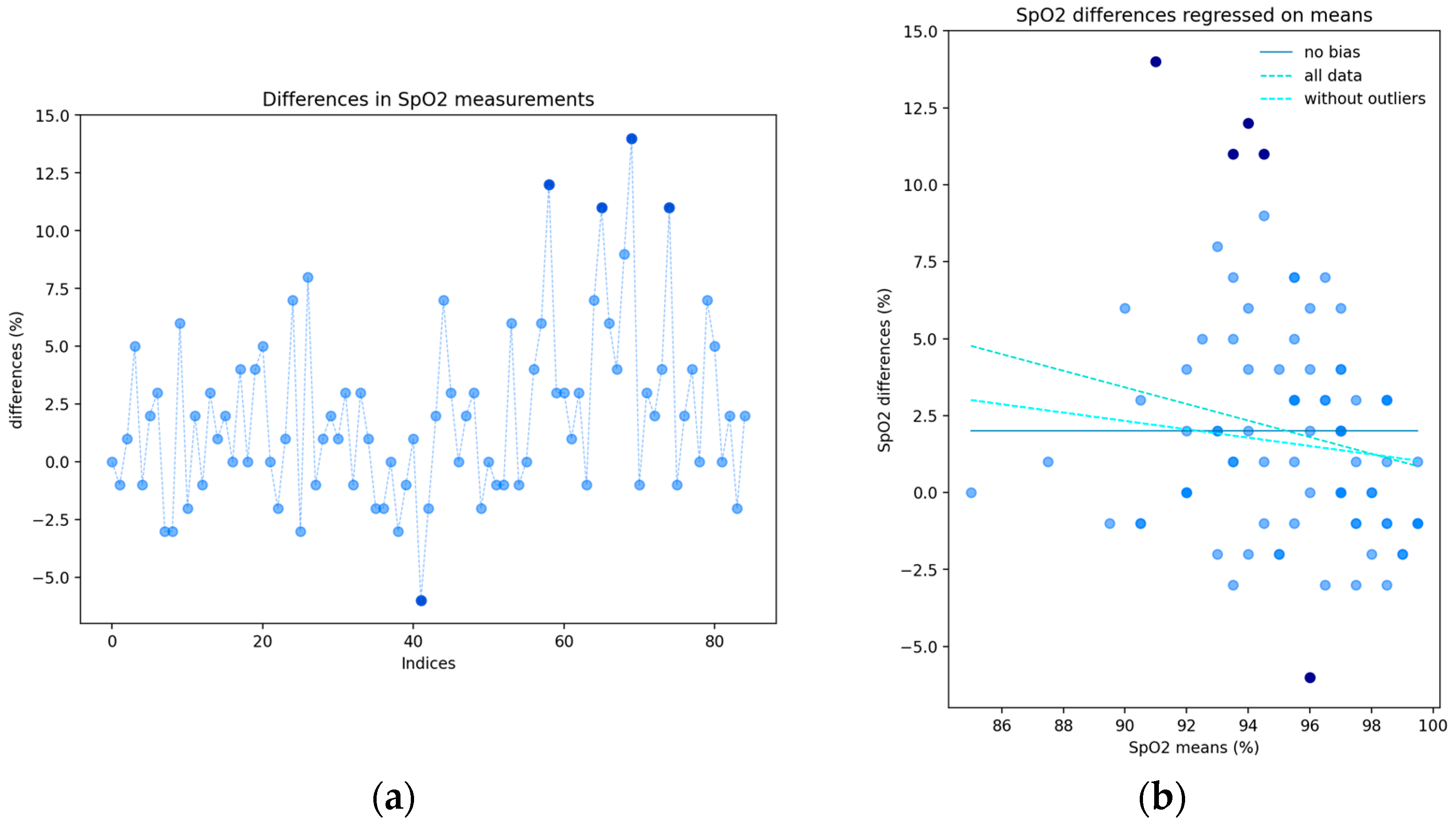
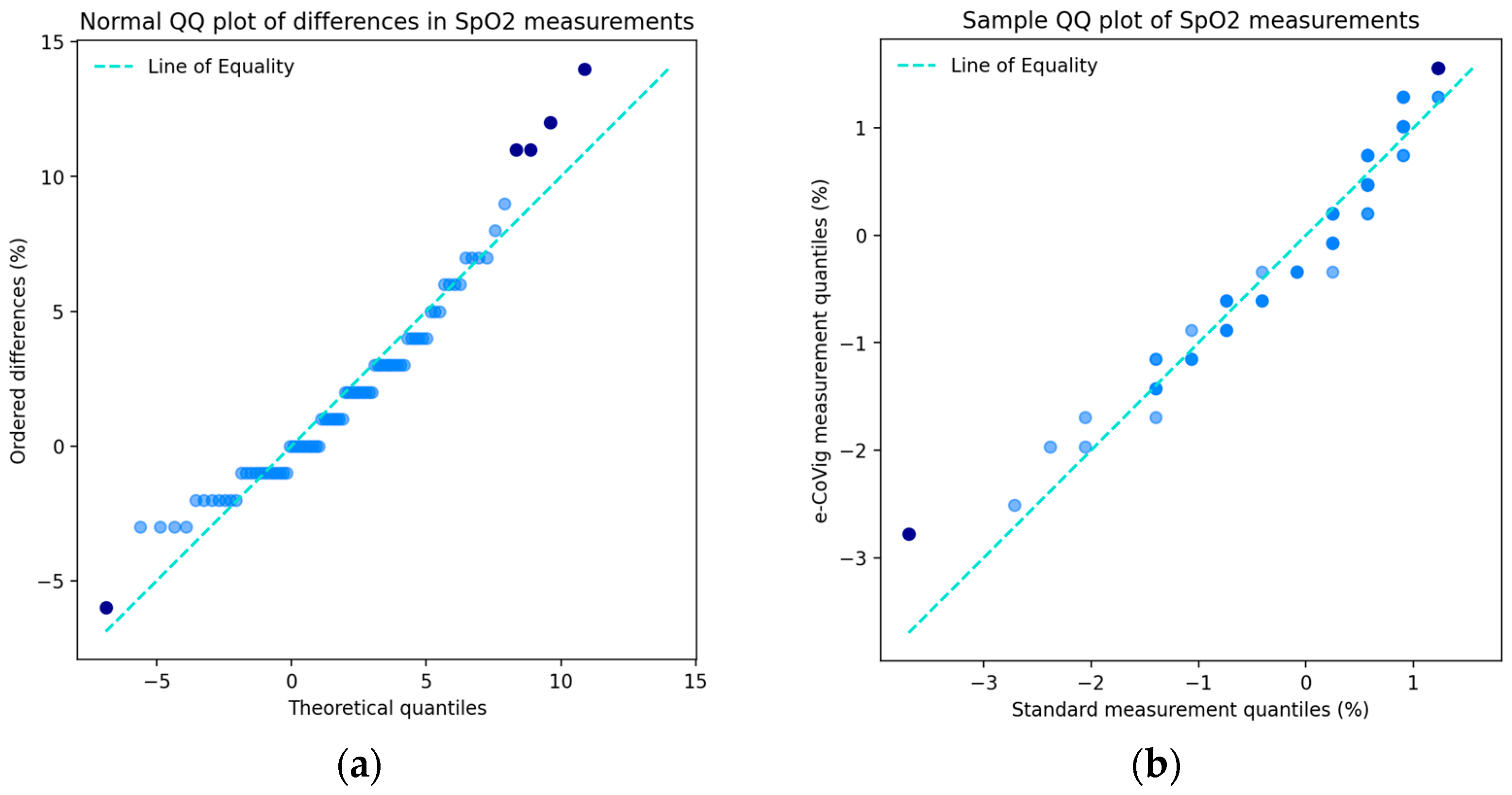
References
- Townsend, N.; Kazakiewicz, D.; Lucy Wright, F.; Timmis, A.; Huculeci, R.; Torbica, A.; Gale, C.P.; Achenbach, S.; Weidinger, F.; Vardas, P. Epidemiology of cardiovascular disease in Europe. Nat. Rev. Cardiol. 2022, 19, 133–143. [Google Scholar] [CrossRef] [PubMed]
- Timmis, A.; Vardas, P.; Townsend, N.; Torbica, A.; Katus, H.; De Smedt, D.; Gale, C.P.; Maggioni, A.P.; Petersen, S.E.; Huculeci, R.; et al. European Society of Cardiology, on behalf of the Atlas Writing Group, European Society of Cardiology: Cardiovascular disease statistics. Eur. Heart J. 2022, 43, 716–799. [Google Scholar] [CrossRef] [PubMed]
- GBD Chronic Respiratory Disease Collaborators. Prevalence and Attributable health burden of chronic respiratory diseases, 1990–2017: A systematic analysis for the Global Burden of Disease Study 2017. Lancet Respir. Med. 2020, 8, 585–596. [Google Scholar] [CrossRef] [PubMed]
- Forum of International Respiratory Societies. The Global Impact of Respiratory Disease, 3rd ed.; European Respiratory Society: Lausanne, Switzerland, 2021. [Google Scholar]
- Barbosa, M.T.; Sousa, C.S.; Morais-Almeida, M. Telemedicine in the Management of Chronic Obstructive Respiratory Diseases: An Overview. In Digital Health, 1st ed.; Linwood, S.L., Ed.; Exon Publications: Brisbane, Australia, 2022. [Google Scholar]
- Raposo, A.; Marques, L.; Correia, R.; Melo, F.; Valente, J.; Pereira, T.; Rosario, L.B.; Froes, F.; Sanches, J.; Silva, H.P.D. e-CoVig: A novel mHealth system for remote monitoring of symptoms in COVID-19. Sensors 2021, 10, 3397. [Google Scholar] [CrossRef] [PubMed]
- Raposo, A.; Melo, F.; Sanches, J.M.; Plácido da Silva, H. Low-cost pulse oximetry and infra-red temperature device for COVID-19 patients. In Proceedings of the 27th Portuguese Conference on Pattern Recognition—RECPAD 2021, Évora, Portugal, 11 November 2021; pp. 81–82. [Google Scholar]
- Supelnic, M.N.; Ferreira, A.F.; Bota, P.J.; Brás-Rosário, L.; Plácido da Silva, H. Benchmarking of Sensor Configurations and Measurement Sites for Out-of-the-Lab Photoplethysmography. Sensors 2024, 24, 214. [Google Scholar] [CrossRef] [PubMed]
- ISO 80601-2-61:2017; Medical Electrical Equipment–Part 2-61: Particular Requirements for Basic Safety and Essential Performance of Pulse Oximeter Equipment. International Organization for Standardization: Geneva, Switzerland, 2017.
- Bland, J.M.; Altman, D.G. Statistical methods for assessing agreement between two methods of clinical measurement. Lancet 1986, 1, 307–310. [Google Scholar] [CrossRef] [PubMed]
- Bland, J.M.; Altman, D.G. Measuring agreement in method comparison studies. Stat. Methods Med. Res. 1999, 8, 135–160. [Google Scholar] [CrossRef] [PubMed]
- Carkeet, A. Exact Parametric Confidence Intervals for Bland-Altman Limits of Agreement. Optom. Vis. Sci. 2015, 92, e71–e80. [Google Scholar] [CrossRef]
- Lin, L.I. A Concordance Correlation Coefficient to Evaluate Reproducibility. Biometrics 1989, 45, 255–268. [Google Scholar] [CrossRef]
- How Heart Beats, NIH Site. Available online: https://www.nhlbi.nih.gov/health/heart/heart-beats (accessed on 20 May 2024).
- Hafen, B.B.; Sharma, S. Oxygen Saturation; StatPearls Publishing: St. Petersburg, FL, USA, 2024. [Google Scholar]
- Watson, P.F.; Petrie, A. Method Agreement analysis: A review of correct methodology. Theriogenology 2010, 73, 1167–1179. [Google Scholar] [CrossRef]
- Cutuli, S.L.; Osawa, E.A.; Eyeington, C.T.; Proimos, H.; Canet, E.; Young, H.; Peck, L.; Eastwood, G.M.; Glassford, N.J.; Bailey, M.; et al. Accuracy of non-invasive body temperature measurement methods in critically ill patients: A prospective, bicentric, observational study. Crit. Care Resusc. 2023, 23, 346–353. [Google Scholar] [CrossRef] [PubMed]
- Dolibog, P.; Pietrzyk, B.; Kierszniok, K.; Pawlicki, K. Comparative Analysis of Human Body Temperatures Measured with Noncontact and Contact Thermometers. Healthcare 2022, 10, 331. [Google Scholar] [CrossRef] [PubMed]
- Downey, C.; Ng, S.; Jayne, D.; Wong, D. Reliability of a wearable wireless patch for continuous remote monitoring of vital signs in patients recovering from major surgery: A clinical validation study from the TRaCINg trial. BMJ Open 2019, 9, e031150. [Google Scholar] [CrossRef] [PubMed]
- Jacobs, F.; Scheerhoorn, J.; Mestrom, E.; van der Stam, J.; Bouwman, R.A.; Nienhuijs, S. Reliability of heart rate and respiration rate measurements with a wireless accelerometer in postbariatric recovery. PLoS ONE 2021, 6, e0247903. [Google Scholar] [CrossRef] [PubMed]
- Wilson, B.J.; Cowan, H.J.; Lord, J.A.; Zuege, D.J.; Zygun, D.A. The accuracy of pulse oximetry in emergency department patients with severe sepsis and septic shock: A retrospective cohort study. BMC Emerg. Med. 2010, 10, 9. [Google Scholar] [CrossRef] [PubMed]
- Thijssen, M.; Janssen, L.; Le Noble, J.; Foudraine, N. Facing SpO2 and SaO2 discrepancies in ICU patients: Is the perfusion index helpful? J. Clin. Monit. Comput. 2020, 34, 693–698. [Google Scholar] [CrossRef] [PubMed]
- Chatfield, M.D.; Cole, T.J.; de Vet, H.C.; Marquart-Wilson, L.; Farewell, D.M. blandaltman: A command to create variants of Bland-Altman plots. Stata J. 2023, 23, 851–874. [Google Scholar] [CrossRef]
- Taffé, P. Effective plots to assess bias and precision in method comparison studies. Stat. Methods Med. Res. 2018, 27, 1650–1660. [Google Scholar] [CrossRef]
- Taffé, P. Assessing bias, precision and agreement in method comparison studies. Stat. Methods Med. Res. 2020, 29, 778–796. [Google Scholar] [CrossRef]
- Francq, B.G.; Govaerts, B. How to regress and predict in Bland-Altman plot? Review and contribution based on tolerance intervals and correlated-errors-in-variables models. Statist. Med. 2016, 35, 2328–2358. [Google Scholar] [CrossRef] [PubMed]
- Francq, B.G.; Berger, M.; Boachie, C. To tolerate or to agree: A tutorial on tolerance intervals in method comparison studies with BivRegBLS R package. Statist. Med. 2020, 39, 4334–4349. [Google Scholar] [CrossRef] [PubMed]
- Donner, A.; Zou, G.Y. Closed-from intervals for functions of the normal mean and standard deviation. Methods Med. Res. 2012, 21, 347–359. [Google Scholar]
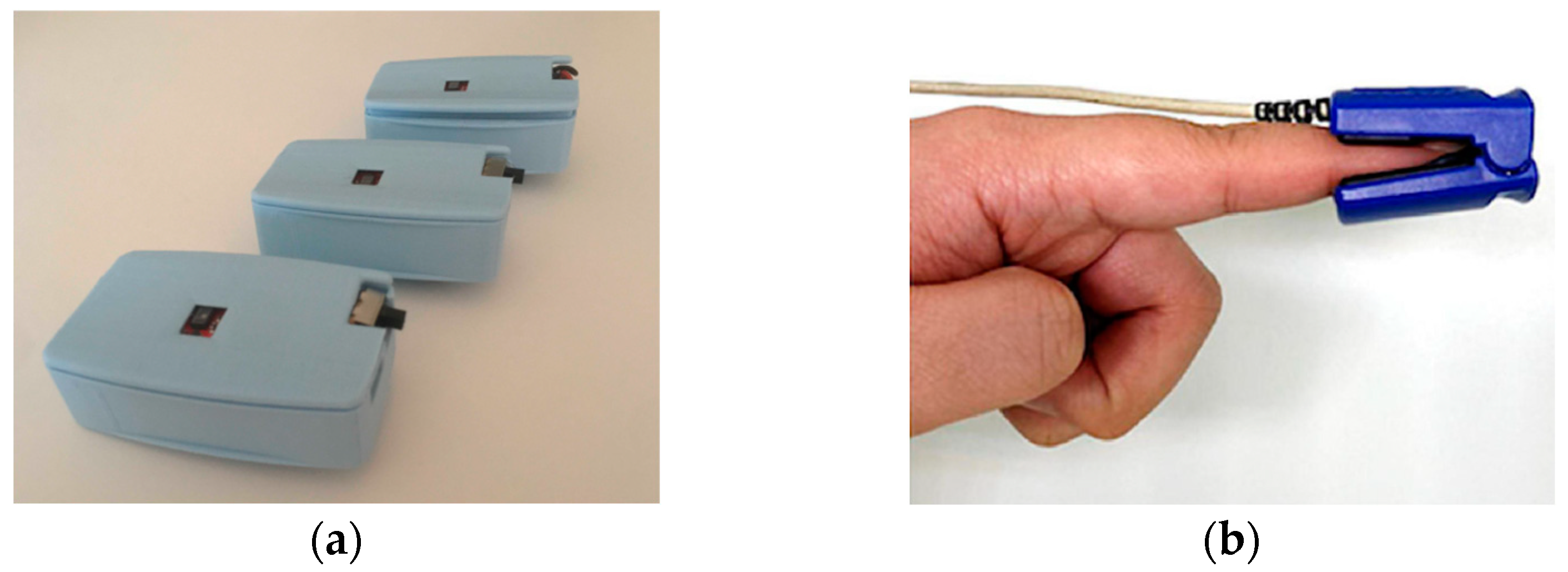
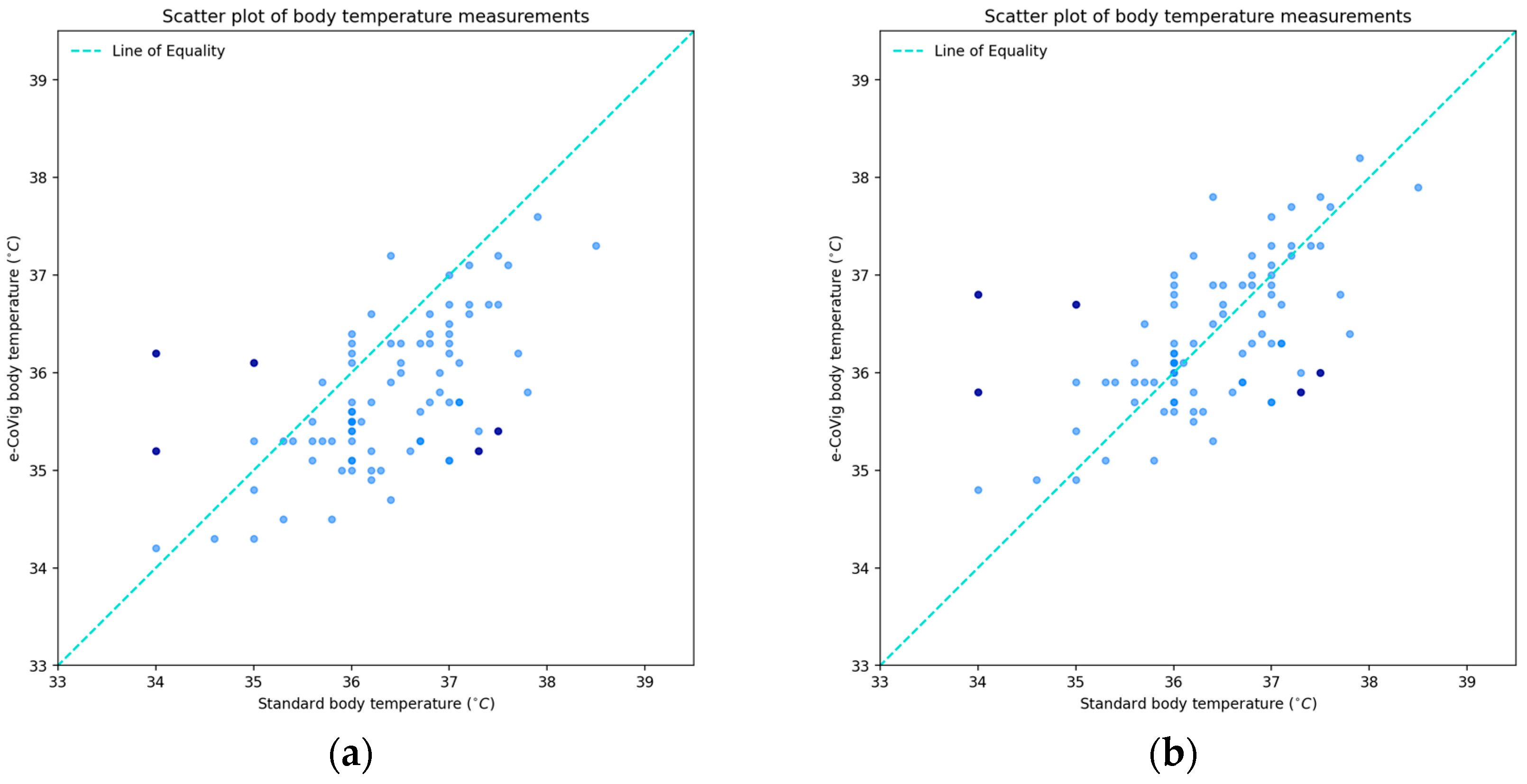
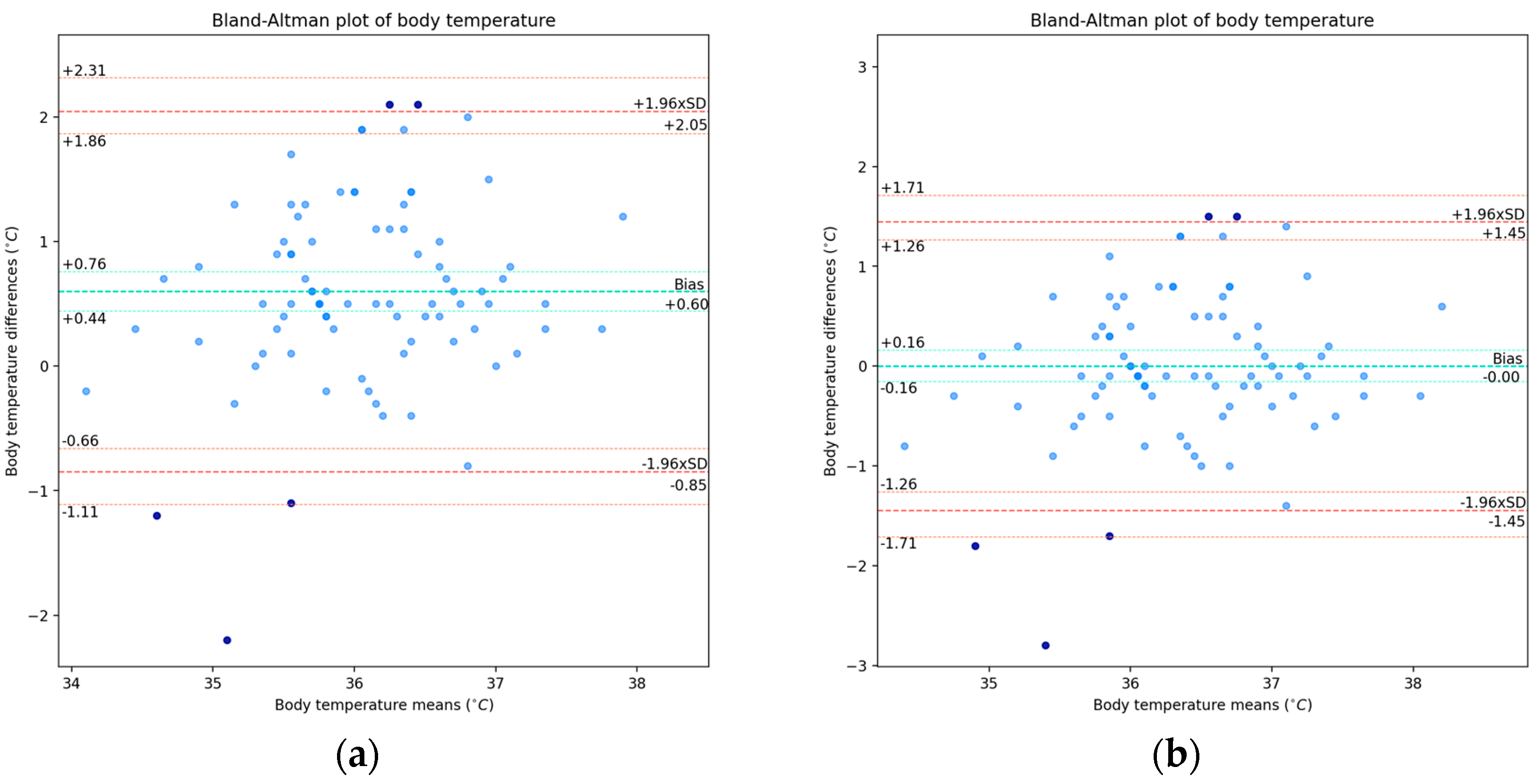

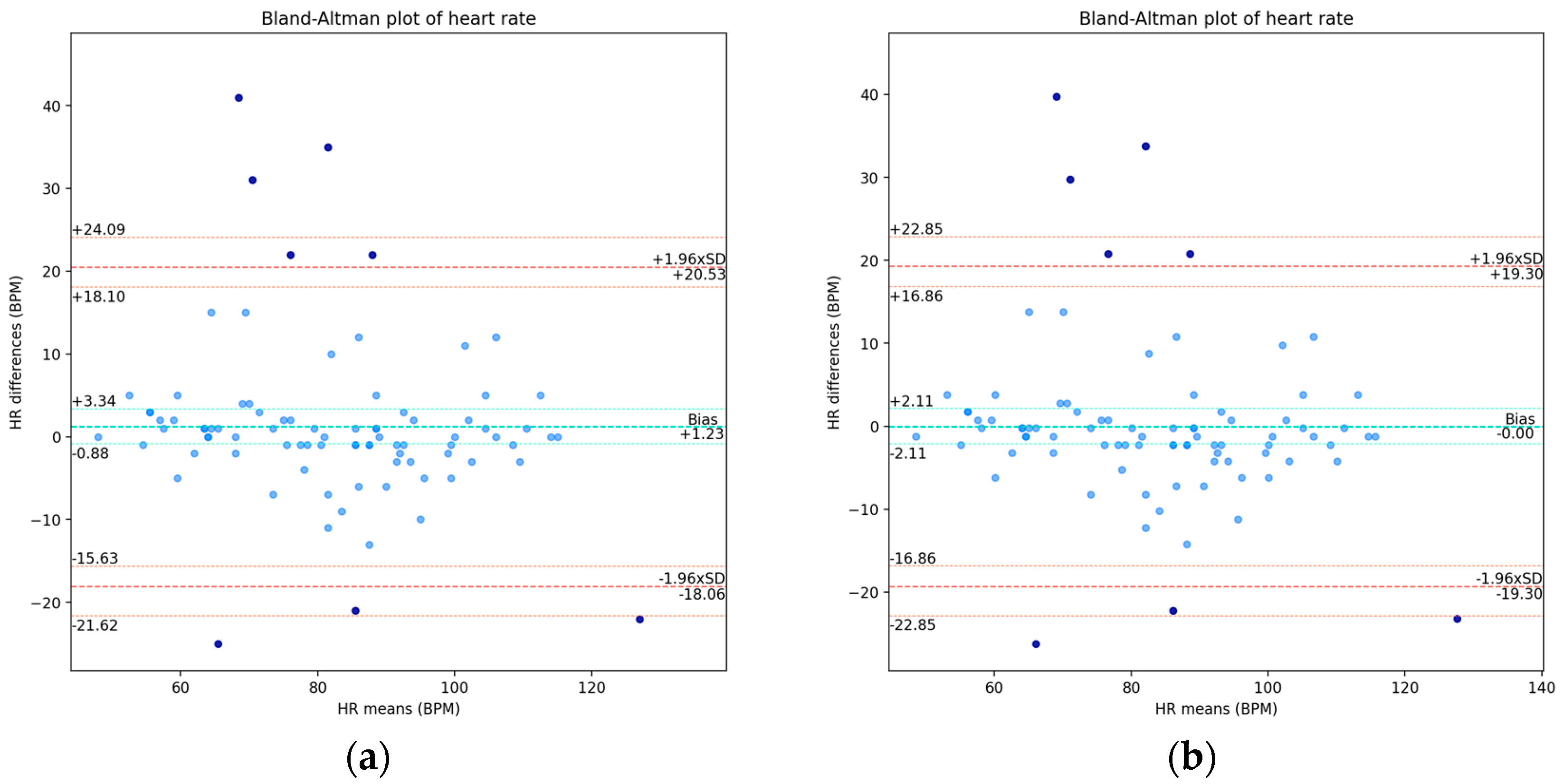

| Variable | Mean | SD | Min | 25% | 50% | 75% | Max |
|---|---|---|---|---|---|---|---|
| Standard Temp (°C) | 36.36 | 0.87 | 34 | 36 | 36.4 | 37 | 38.5 |
| e-CoVig Temp (°C) | 35.76 | 0.74 | 34.2 | 35.3 | 35.7 | 36.3 | 37.6 |
| Standard HR (BPM) | 83.1 | 17.05 | 48 | 71.25 | 85 | 93.75 | 116 |
| e-CoVig HR (BPM) | 81.87 | 18.59 | 48 | 65 | 83 | 94.75 | 138 |
| Standard SpO2 (%) | 96.23 | 3.06 | 85 | 94 | 97 | 98 | 100 |
| e-CoVig SpO2 (%) | 94.26 | 3.71 | 84 | 92 | 95 | 97 | 100 |
Disclaimer/Publisher’s Note: The statements, opinions and data contained in all publications are solely those of the individual author(s) and contributor(s) and not of MDPI and/or the editor(s). MDPI and/or the editor(s) disclaim responsibility for any injury to people or property resulting from any ideas, methods, instructions or products referred to in the content. |
© 2024 by the authors. Licensee MDPI, Basel, Switzerland. This article is an open access article distributed under the terms and conditions of the Creative Commons Attribution (CC BY) license (https://creativecommons.org/licenses/by/4.0/).
Share and Cite
Martins, F.; Fragoso, E.; Plácido da Silva, H.; Dias, M.S.; Rosário, L.B. Validation of an mHealth System for Monitoring Fundamental Physiological Parameters in the Clinical Setting. Sensors 2024, 24, 5164. https://doi.org/10.3390/s24165164
Martins F, Fragoso E, Plácido da Silva H, Dias MS, Rosário LB. Validation of an mHealth System for Monitoring Fundamental Physiological Parameters in the Clinical Setting. Sensors. 2024; 24(16):5164. https://doi.org/10.3390/s24165164
Chicago/Turabian StyleMartins, Filipe, Elsa Fragoso, Hugo Plácido da Silva, Miguel Sales Dias, and Luís Brás Rosário. 2024. "Validation of an mHealth System for Monitoring Fundamental Physiological Parameters in the Clinical Setting" Sensors 24, no. 16: 5164. https://doi.org/10.3390/s24165164









